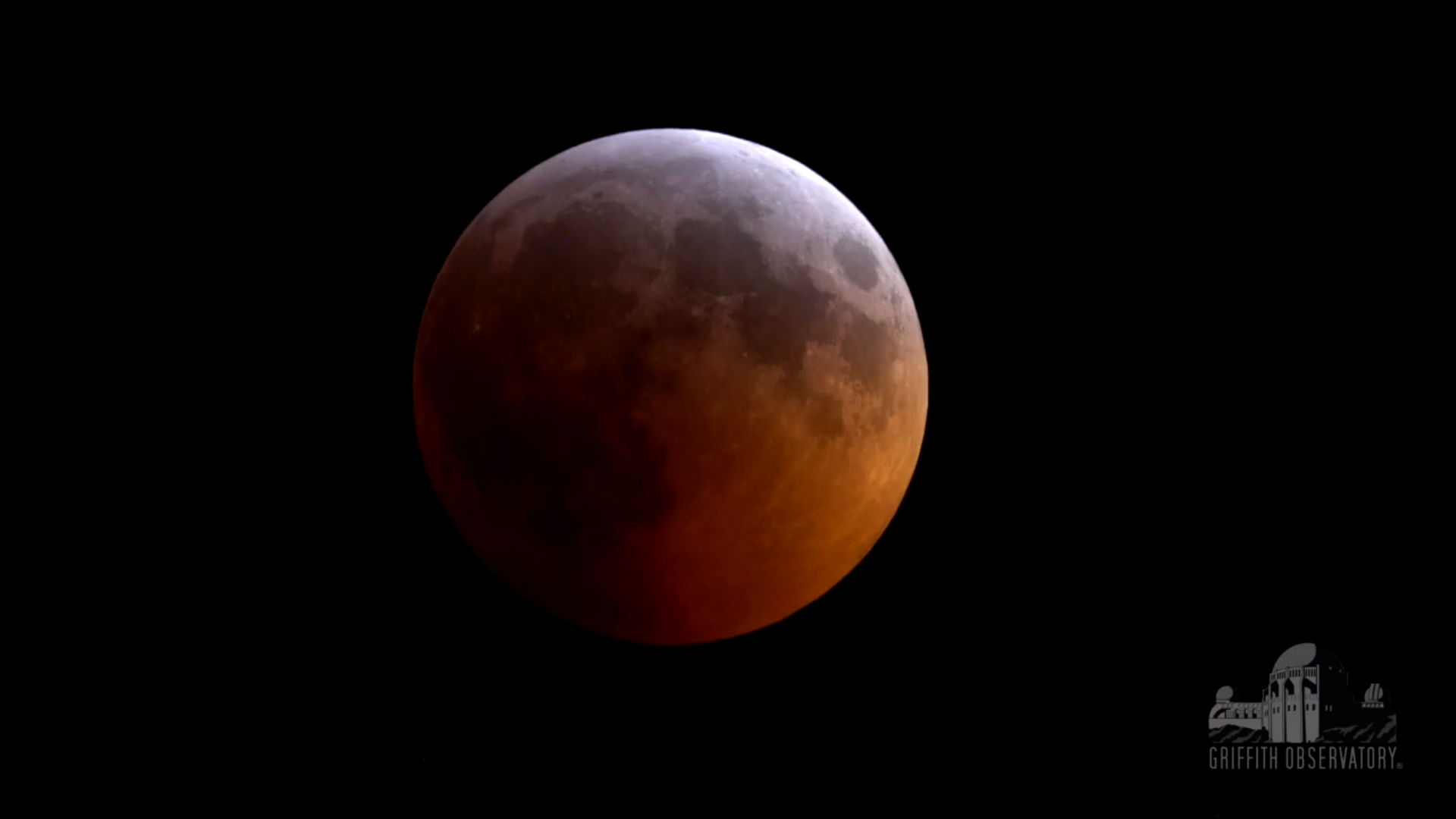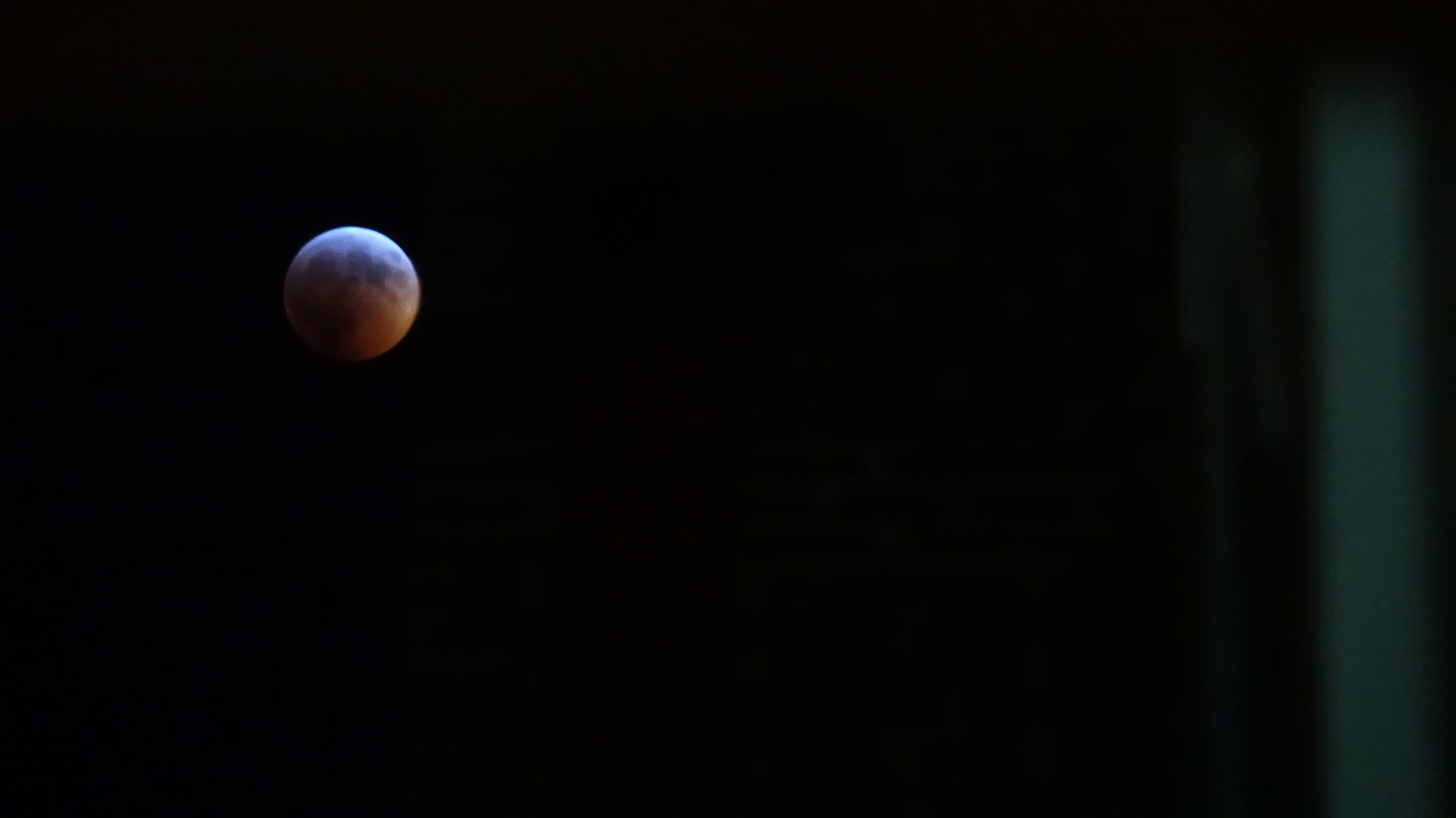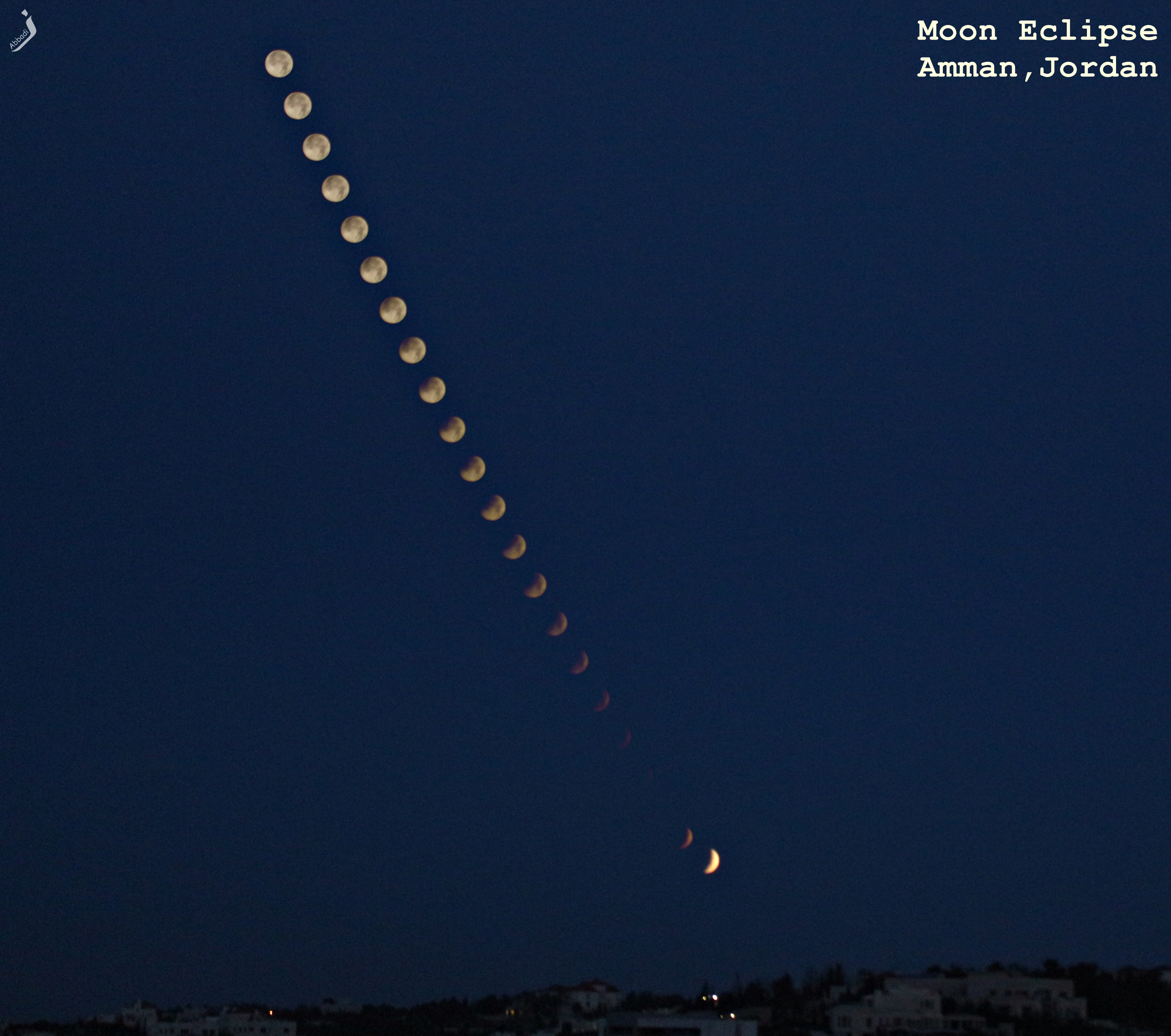Super Blood Wolf Moon of 2019 Thrills Skywatchers with Stunning (and Red) Lunar Sight
NEW YORK — This past evening, a show-stopping celestial event — the only total lunar eclipse of 2019 — crossed the sky and likely captivated millions of skywatchers across the Americas and beyond, from above the Rocky Mountains to down beyond the Andes Mountains.
At 10:33 p.m. EST (03:33 UTC) a visible shadow began to creep across the moon's face. As many people across the U.S. East Coast braved the chilly weather brought on by Winter Storm Yoshi to view the moon pass through the darkest part of Earth's shadow, people took to social media to express elation, wonder and tearful joy. From the famed Griffith Observatory in Los Angeles, California came video of a blood-red moon.
Several hashtags like #SuperBloodWolfMoon and #LunaDeSangre (meaning "blood moon" in Spanish) emerged on Twitter, where people shared their fascination with the total lunar eclipse. Along the U.S. East Coast, many spectators ventured out into frigid temperatures to watch the moon turn red. [Amazing Photos of the Super Blood Wolf Moon of 2019!]

"We're out observing despite the wind and [temperature] of only 6 degrees," veteran astrophotographers Imelda Joson and her husband Edwin Aguirre told Space.com from a suburb near Boston. "We're standing on a half-inch of ice."
Severe winter weather meant there weren't many neighbors who opted to join Aguirre and and Joson in their driveway.
"Despite wearing gloves and two layers of wool socks, we couldn't feel our fingers and toes anymore by the time totality ended," Joson and Aguirre said. "We've seen and photographed so many total lunar eclipses in the past so we could have chosen to just watch through the window. But our passion to share this wondrous event with other people who couldn't see it drove us to go outside and capture the eclipse with our camera and telescope. It really takes dedication to endure the extreme weather. We're so lucky the sky cleared up in time for the eclipse!"
In Summit, New Jersey, the lunar eclipse offered a rare chance for a group of 10-year-olds to stay up late and see something truly special. A slumber party birthday bash for the friend of the daughter of Space.com managing editor Tariq Malik transformed into a total lunar eclipse party.
Get the Space.com Newsletter
Breaking space news, the latest updates on rocket launches, skywatching events and more!
"Welcome to the lunar eclipse club!" Malik's daughter Zadie said as the moon took on its red hue.

In a live eclipse webcast from the telescope service Slooh, astronomer Paul Cox said "it doesn't matter who you are... these celestial events can become quite overwhelming" emotionally as he and others reflect on the "wonder and awe" of it all.
Across North and South America, from Alaska to the Caribbean and down to Argentina, the total lunar eclipse mesmerized millions of people. The phenomenal sight on Jan. 20 was definitely one to remember: Both continents won't experience a simultaneous total lunar eclipse until May 16, 2022.(The next total lunar eclipse will occur on May 26, 2021, but will only be visible in its totality from parts of Asia, Australia and the Pacific Ocean. The Americas will only see part of the event.)
In addition to being undeniably mesmerizing to the eye, eclipses have much to teach us about our place in the universe. The total lunar eclipse can give us a glimpse into the composition of Earth's skies. The crimson-orange colors cast onto the moon are produced by the blue planet's atmosphere. "Clouds, dust, ash, photochemical droplets and organic material in the atmosphere" can change how much light is bent to form Earth's cone-shaped shadow, NASA officials said in a statement.
The moon passes through the deepest part of the shadow, called the umbra, to reflect those scarlet hues.
"Imagine that you're sitting on the moon, looking back at the Earth as it goes between the moon and the sun," NASA scientist Noah Petro told Space.com in an interview. "And, you'll see this ring of red around the Earth as the Earth's atmosphere, all of the sunrises and sunsets."

In a grander cosmic perspective, total lunar eclipses reveal the orbital cycles that the bodies in our solar system perform on a regular basis.
For instance, lunar eclipses are a reminder that the moon's orbit is tilted slightly with respect to Earth. For the moon to pass through Earth's shadow, the sun must be opposite the moon, on the other side of the planet. Only during a full moon phase do lunar eclipses occur.
So why don't they occur every month? Since the lunar orbit is tilted slightly, it often travels over or under Earth's regular shadow. During the lunar eclipse of Jan. 20 to Jan. 21, the moon traveled through the top portion of Earth's umbra to produce a noticeable dimming over the entire face of the moon Sunday night and into Monday morning in some places.
A partial lunar eclipse will appear later this year over the hemisphere that didn't catch the January spectacle. On July 16, 2019, the full moon will pass through the southern portion of Earth's umbra, causing the copperish colors to appear on a part of the lunar face. The entire African continent and the Middle East will catch the beautiful sight, weather permitting.
This year will also feature a special sort of eclipse of the sun. On Nov. 11, Mercury will appear as a tiny silhouette on the solar disk from the United States, and if viewing through the safety of solar eclipse glasses, Mercury will look like a tiny black blemish. This transit of Mercury is rare: There will be none visible from the United States again until May 7, 2049.
Editor's note: If you snap an amazing photo of the January 2019 total lunar eclipse that you'd like to share with Space.com and our news partners for a possible story or image gallery, send comments and images in to: spacephotos@space.com.
Space.com managing editor Tariq Malik contributed to this report from West Orange, New Jersey. Follow Doris Elin Salazar on Twitter @salazar_elin. Follow us @Spacedotcom and Facebook. Original article on Space.com.
Join our Space Forums to keep talking space on the latest missions, night sky and more! And if you have a news tip, correction or comment, let us know at: community@space.com.

Doris is a science journalist and Space.com contributor. She received a B.A. in Sociology and Communications at Fordham University in New York City. Her first work was published in collaboration with London Mining Network, where her love of science writing was born. Her passion for astronomy started as a kid when she helped her sister build a model solar system in the Bronx. She got her first shot at astronomy writing as a Space.com editorial intern and continues to write about all things cosmic for the website. Doris has also written about microscopic plant life for Scientific American’s website and about whale calls for their print magazine. She has also written about ancient humans for Inverse, with stories ranging from how to recreate Pompeii’s cuisine to how to map the Polynesian expansion through genomics. She currently shares her home with two rabbits. Follow her on twitter at @salazar_elin.









